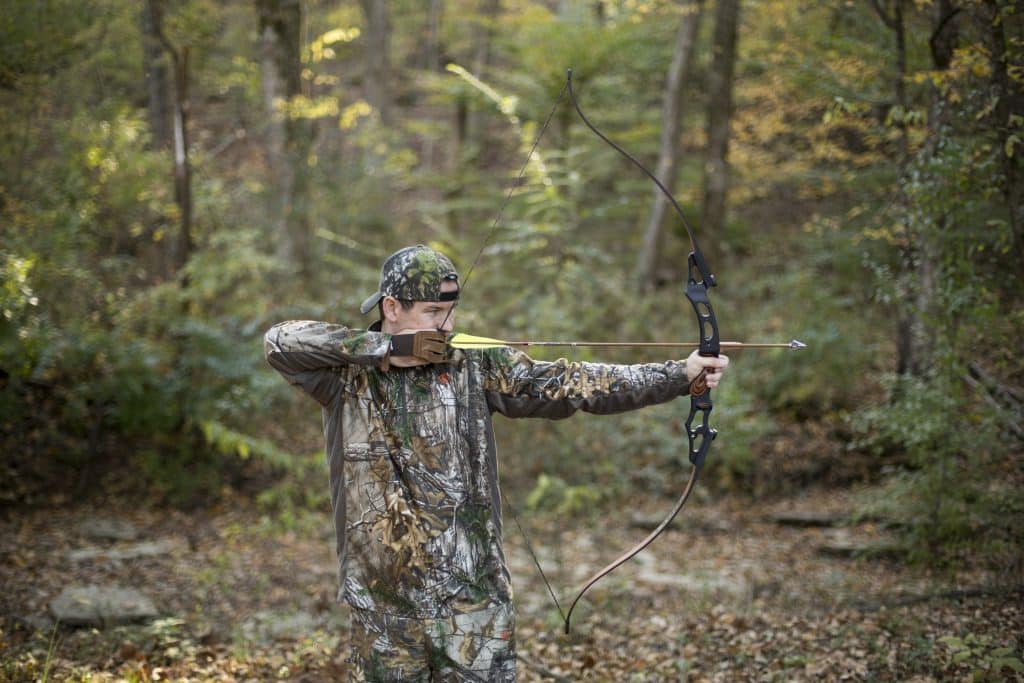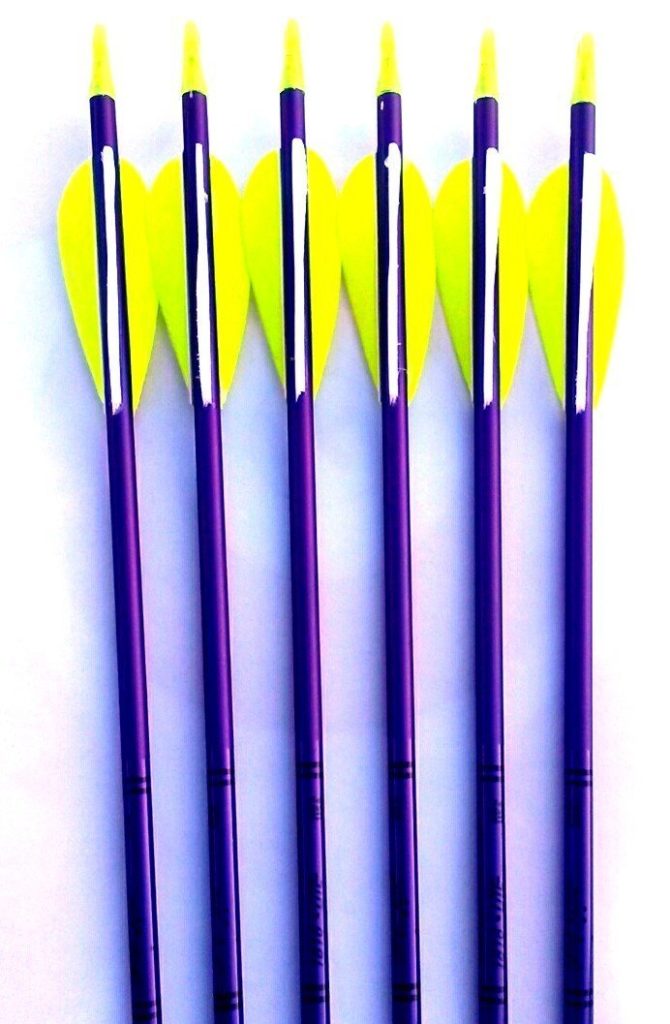When bowhunting, there will always be elements that are out of your control and you will have to adapt accordingly in order to achieve your hunting goal. These may pose challenges and difficulties especially to a novice or beginner. Therefore, you should control what you can such as the equipment you choose which will play a great role in the performance of your shot. As a bowhunter, a good arrow is definitely something that you should look into. Bows often get all the attention but both bows and arrows need to work together for the best accuracy. Not everyone needs to buy the latest and most expensive arrows, but every bowhunter should carefully select the arrows they shoot with. Here are 4 aspects you should consider while choosing arrows for hunting.

Table of Contents
1. Arrow Materials

Arrows for hunting are made in different materials. In choosing your arrow material, there is no right or wrong. You will just need to pick the one that suits your personal preference. Carbon The most popular choice for hunting arrow material today is carbon. This is due to the durability and accuracy of carbon arrows. Carbon arrows are manufactured to be thin and light which allows them to shoot accurately at game. They are a good match for heavier bows, particularly compound bows.
Carbon is a good choice of material for your arrow when hunting, but the downside is that it can be pricey. Aluminium Aluminium arrows are mostly used by professional or more experienced bowhunters. Though they are typically heavier, these arrows are able to penetrate deeply into the targeted game. Bowhunters who use high speed bows may also prefer to use these arrows because they are heavier and can transfer the energy of the bow efficiently. Aluminium arrows usually cost more than wooden arrows but less than carbon arrows. Wood Wooden arrows have been around for as long as bowhunting has been.
A beautifully wooden carved arrow will definitely reflect the richness of the bowhunting tradition and win in terms of aesthetics. Hence, they are generally used by traditional archers. Wooden arrows are also cost-effective compared to arrows made from other materials. However, they do not last long since they are made from organic material. They are also typically not popular with regular bowhunters today. This is because they can be heavy and slow. It is also hard to make wood arrows that can match the tolerance of bows like compact bows.
Aluminium-Carbon Composite Aluminium-carbon composite arrows are usually manufactured to have aluminium in the centre with carbon surrounding it. These arrows are popular with competitive archers as you notice that Olympic archers use hybrid arrows. They are light, stiff and perform well in the wind. The downside is that these arrows are more costly than all the other materials. They also may not be as durable as an all-carbon arrow.
2. Arrow Spine

The ability of an arrow to bend is known as its “spine”. This is the biggest factor that influences your shooting accuracy. Different arrows are manufactured with different amounts of spine. You will want to find an arrow with just the right amount of spine so that it can shoot accurately. Arrow spine is reflected in three digit numbers, commonly referred to as deflection. This is printed onto the arrow shaft, which is the body of the arrow.
You will commonly see numbers like 300, 350, 400 or 500. The higher the number, the more the arrow deflects. The spine of an arrow is basically measured by suspending the shaft at two points then hanging a 1.94 pound weight in the middle of the shaft. The measurement will be taken based on how much the arrow has bent down due to the weight. For deflection of 300, this means that the arrow has deflected .300” from the middle.
An arrow that does not bend much is referred to as “stiff” while an arrow that bends a lot is referred to as “weak”. Overall, a bow with a heavy draw weight will require a stiffer arrow while a bow with a lower draw weight will need a weaker one. Hence, you should check out arrows with different spines and find one that is suitable to the bow that you use for hunting.
Certain other factors also affect the spine of the arrow that you should consider. For example, the weight of the arrow tip affects how much your arrow bends. A heavy tip or point will make your arrow bend more than a lighter tip or point. In other words, a heavier point weakens an arrow while a lighter point stiffens an arrow. Material of the arrow also affects its spine. For example, aluminium arrows bend more than carbon arrows.
You should shoot arrows that have the same spine. This is because variation in spine can affect your shooting performance. Generally, more expensive arrows have higher quality in that they have less variation from arrow to arrow. Hence, the spine consistency will be maintained.
3. Arrow Measurements Length
The length of your arrow needs to be longer than the draw length of your bow. As a beginner, the recommended length of arrow is about 3.75 inches more than your draw length. As you gain more experience, you can start using arrows around 1 inch longer than your draw length. You can measure your draw length by using a draw length indicator.
Most hunting equipment stores will allow you to use it. The indicator is basically an arrow with measurements on it. You will need to put it into your bow and draw your bow to anchor point. The anchor point is the spot on your face that your bow string hand touches at full draw. Pay attention to the measurement at the end of the indicator and add 3.75 inches to it when selecting an arrow.
Diameter The smaller the diameter of the arrow shaft, the lower the opportunity for wind drift. This allows for an accurate shot to be taken. A smaller diameter shaft also enables better penetration. This is because there is less surface area and friction behind the arrow tip. Thus, your arrow is able to maintain its in-flight momentum for a longer period of time. Weight The weight of the arrow you choose is directly related to the weight of your bow.
Generally, a lighter bow uses a lighter arrow while a heavier bow uses a heavier arrow. Many hunters go for heavier arrows. This is because a heavier arrow has the ability to retain more kinetic energy in-flight. This will give it a good amount of force to penetrate the target. However, the downside is that heavier arrows travel slower which may also affect the performance of the shot. Hence, a lot of time should go into testing arrows of different weights and getting used to your bow and arrow.
4. Arrow Components
Fletching
Fletching is the fin-shaped device that is attached onto an arrow. It plays an important role in stabilizing your arrow which increases the accuracy of your shot when hunting. Fletchings are typically made from light and semi-flexible materials, with the two popular types being vanes and feathers. Vanes are plastic fletchings. They are typically preferred for compound bows and modern recurve bows.
They are popular because they are more stable in wet weathers due to the waterproof nature. Hence, they can also be more durable. This is helpful due to the unpredictable changes of weather during hunting. Besides, vanes can be placed on arrows without considering left or right wing unlike feather fletchings. Feather fletchings are lighter than vanes which makes the arrows shoot slightly faster. They can also be more stable and maintains the consistency of the arrow spine. Hence, many traditional archers and competitive archers choose feathers for indoor tournaments.
Feather fletchings are also quieter compared to vanes, which may prevent spooking game away. They come in either left wing or right wing packages according to the natural bend of feathers. If you choose to use feathers, you must match the feather wing to your fletching tool. Choosing vane or feather will come down to personal preference as both are commonly used for hunting. Fletchings also come in different sizes.
Choosing the size of fletching for your arrow depends on the range at which you plan to shoot. Large fletchings are good for close-range shots as they create a lot of drag which stabilizes your arrow quickly. At a further distance, this drag will not be effective because it will slow the arrow down. Instead, smaller fletchings are good for shooting distant targets because they have less wind drift and less drag.
The type of hunting area would also determine the suitable fletching size. In dense woods, large fletchings are ideal because you there would be minimal wind. You would also typically take close up shots. Whereas when you hunt in an open land, you will be required to shoot at a further distance, hence you should try for smaller fletchings. Most hunters find that something in between works for them as well. Your choice of fletching should be matched to the arrow tip you use as well. If you plan to use a heavy arrow tip like a broadhead, you should make sure your fletching is big enough to stabilize the arrow.
Broadheads
A broadhead is a sharp point attached to the end of an arrow shaft for the purpose of hunting. It is larger than the arrow shaft and commonly comes in a triangular shape with distinct cutting edges. There are three basic types of broadheads. The first type is known as fixed broadheads. These broadheads have fixed blades that do not change their form during hunting.
They are strong and sturdy which is why many expert compound bowhunters choose this broadhead for its reliability. When they get dull, however, you will need to resharpen them. Broadheads with replaceable blades are similar to fixed broadheads but their blades can be removed and replaced. This saves you the hassle and cost of discarding the entire broadhead if only the blades are damaged. However, they are usually more expensive than fixed blades.
Expandable mechanical broadheads on the other hand have retractable blades that only expand to expose the cutting edges during impact. A good one is usually fired with little to no exposed blade because it can move through air efficiently when they are closed. These broadheads are favoured by bowhunters because of their accuracy. However, some will avoid them because of the risk that the broadhead will not open up due to malfunction which will risk not killing the animal.
Your choice of broadhead should depend on the size of game you plan to hunt. Larger broadheads are primarily used to hunt larger game animals to maximize the impact of penetration to make a quick and humane kill. You should also match your broadhead to your size of arrow shaft, fletching and draw weight of bow. Make sure to get a good quality broadhead because you need a sharp and durable broadhead that can penetrate well during hunting.
Conclusion
After considering all these different aspects, you will definitely get a suitable arrow for hunting. Do bear in mind that choosing the arrow requires you to consider other aspects such as what bow you are using too. Also, the fact that you are hunting big game or small game will influence the type of arrow used as well. If you have any ideas or opinions about this, feel free to comment below!

